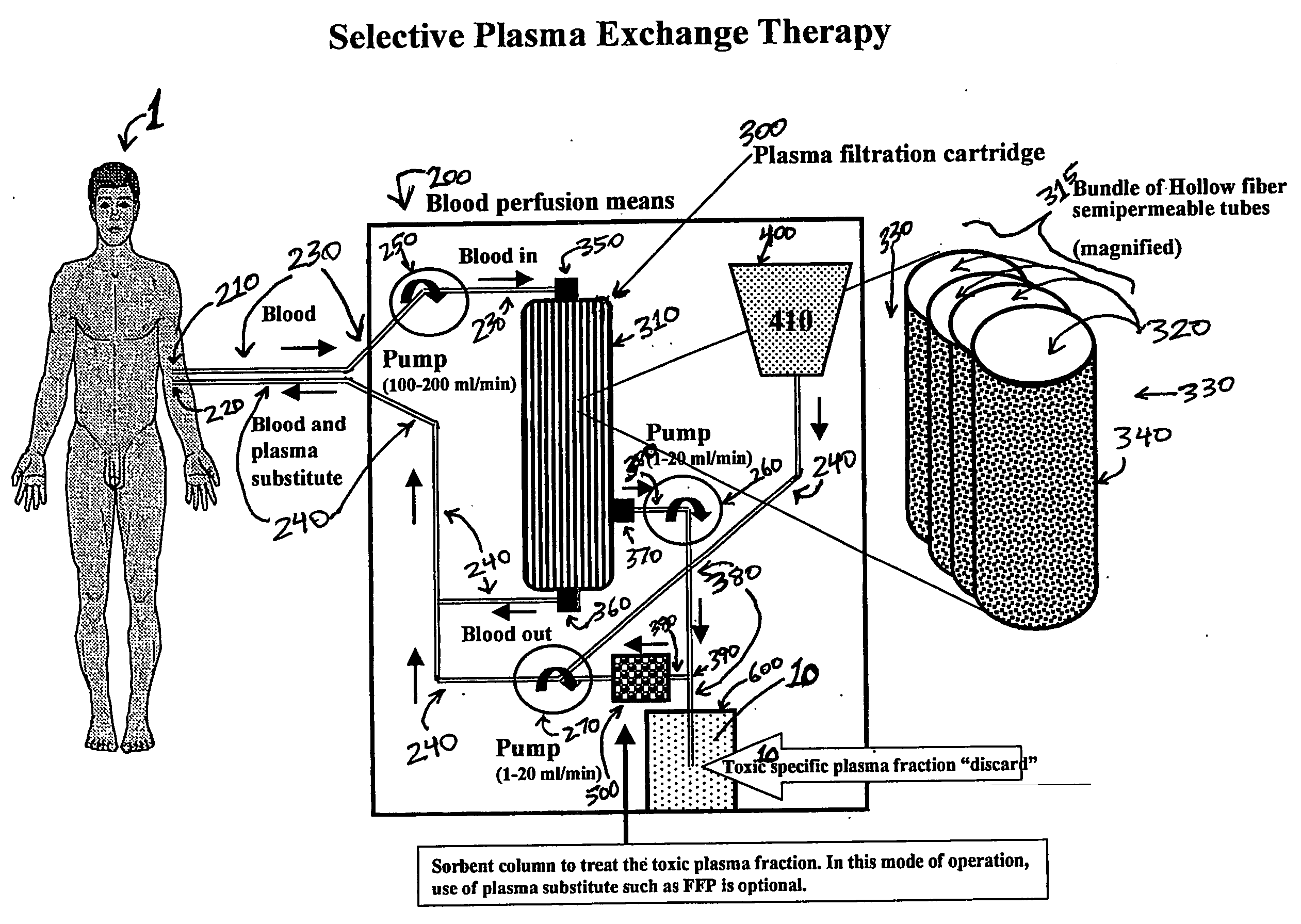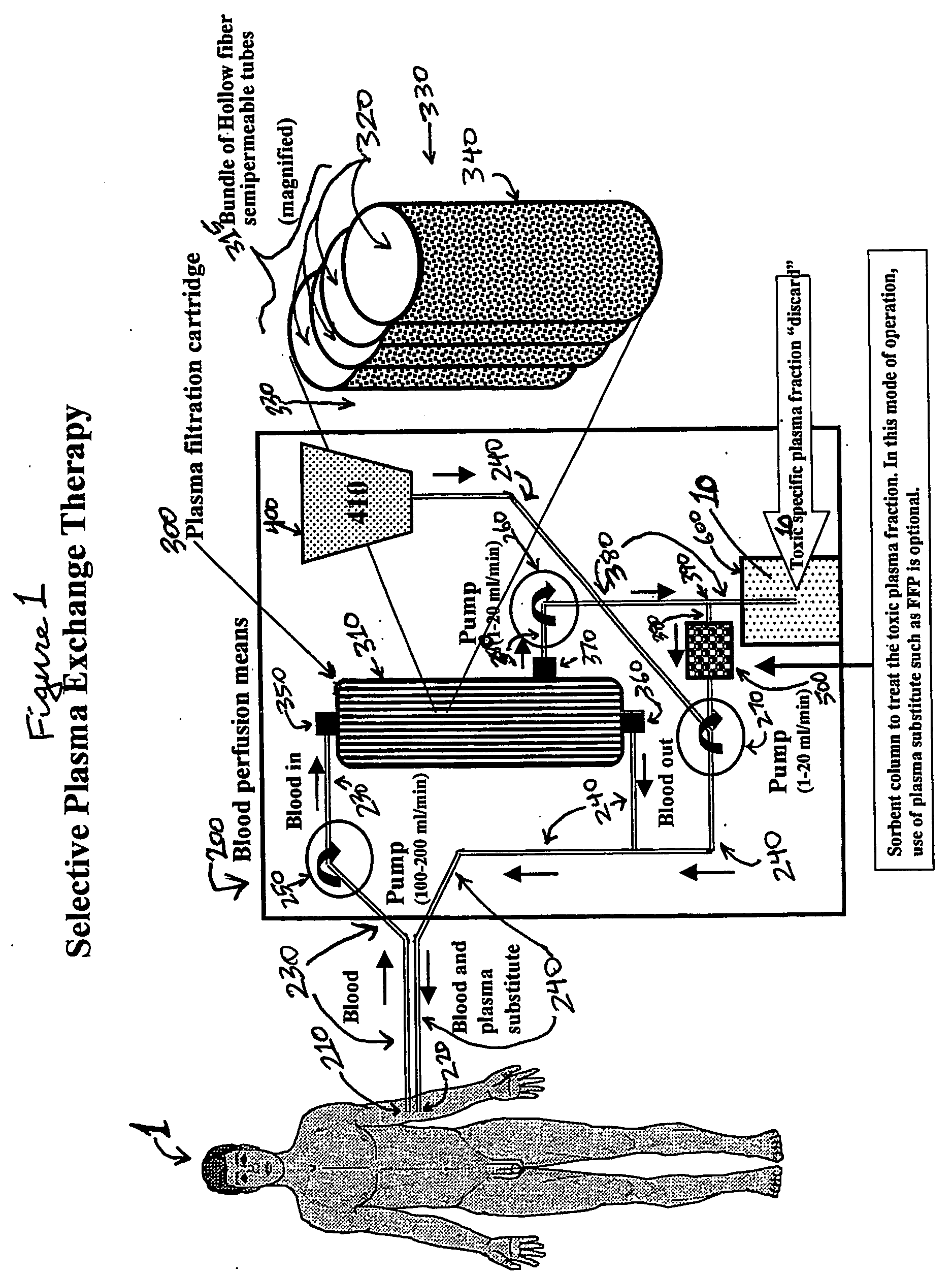Selective plasma exchange therapy
- Summary
- Abstract
- Description
- Claims
- Application Information
AI Technical Summary
Benefits of technology
Problems solved by technology
Method used
Image
Examples
Embodiment Construction
[0022] The concept of selective plasma exchange therapy (SEPET) is based on knowledge that in many diseases and pathological conditions in human patients, including but not limited to liver failure, toxic substances that accumulate in the blood and cause specific symptoms and / or disease complications are well characterized in terms of their chemical structure and formula or molecular weights. For example, many, if not all, known toxins that accumulate in the blood of a human patient as a result of liver failure, and which can damage brain, liver and other vital organs, are substances smaller than about 100 kDa.
[0023] In normal healthy individuals, each plasma component occurs within a range of concentration (e.g., albumin 3.2-4.8 g / dL; bilirubin 0.1-1.0 mg / dL, sodium cation 136-145 mEq / L, etc.), depending on numerous physiological factors (e.g., age, sex, diet, feeding schedule, time of the day or night, presence of stress, etc.). That is why the results of blood tests are typicall...
PUM
 Login to view more
Login to view more Abstract
Description
Claims
Application Information
 Login to view more
Login to view more - R&D Engineer
- R&D Manager
- IP Professional
- Industry Leading Data Capabilities
- Powerful AI technology
- Patent DNA Extraction
Browse by: Latest US Patents, China's latest patents, Technical Efficacy Thesaurus, Application Domain, Technology Topic.
© 2024 PatSnap. All rights reserved.Legal|Privacy policy|Modern Slavery Act Transparency Statement|Sitemap


